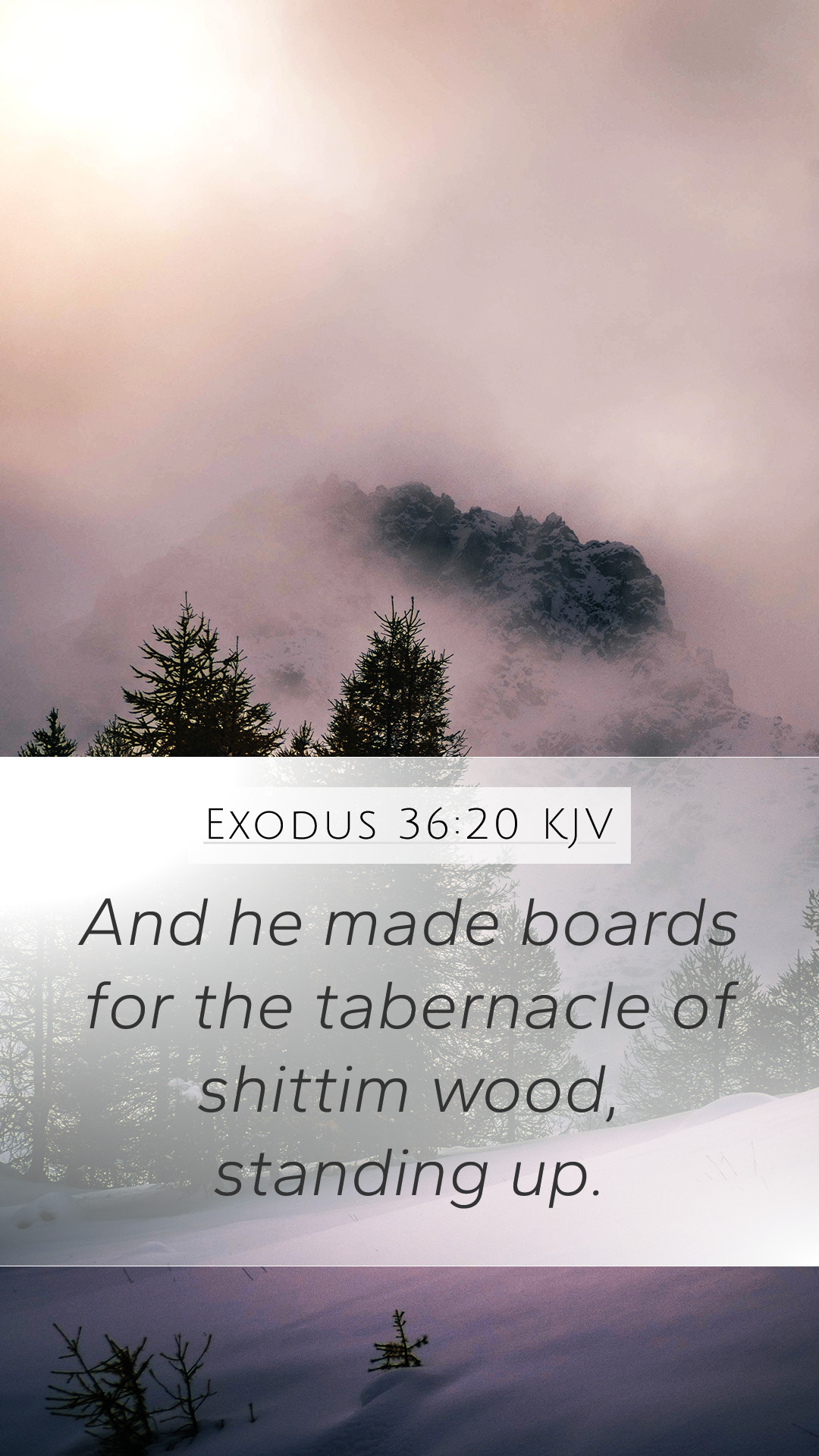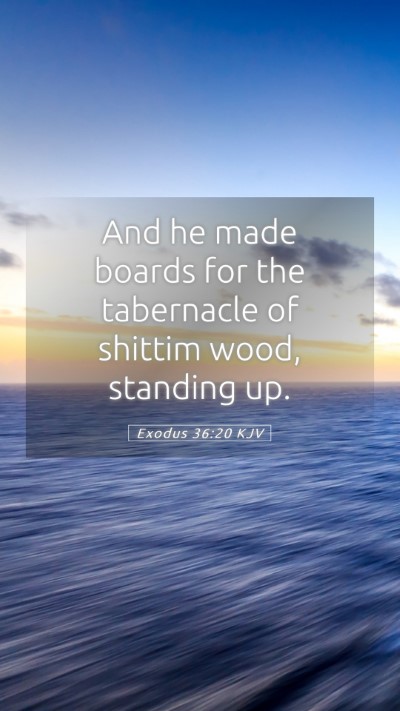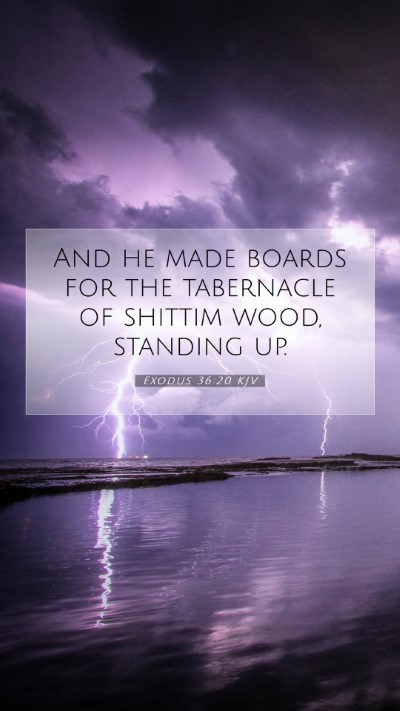Understanding Exodus 36:20
The verse Exodus 36:20 reads: "And he made boards for the tabernacle of shittim wood, standing up." This verse describes the construction of the tabernacle, a significant and sacred dwelling for God’s presence among the Israelites. Below, we delve into the meaning, interpretations, and insights provided by public domain commentaries.
Bible Verse Commentary
In exploring Exodus 36:20, several key themes emerge regarding the significance of the tabernacle and its construction. This analysis incorporates insights from notable commentaries including those of Matthew Henry, Albert Barnes, and Adam Clarke.
Contextual Background
The tabernacle served not only as a portable dwelling for God’s presence but also as a focal point for worship and community among the Israelites as they journeyed through the wilderness. The precision in its construction is indicative of God's detailed nature and the importance of order in worship.
Matthew Henry's Commentary
Matthew Henry emphasizes the symbolic significance of the materials used in the tabernacle's construction, such as the shittim wood, which represents strength and durability. The boards, which are standing, suggest stability and permanence in the presence of God.
Albert Barnes' Insights
Albert Barnes draws attention to the design and layout of the tabernacle. He notes that the construction is carried out with divine instructions, highlighting the importance of divine guidance in the act of building a place for worship. Barnes also mentions that each component of the tabernacle had a spiritual significance, reflecting deeper truths about God’s covenant with Israel.
Adam Clarke's Analysis
Adam Clarke provides a detailed examination of the materials, asserting that the choice of shittim wood was not arbitrary; rather, it indicates a rich ancient tradition of using resilient materials for sacred spaces. He also remarks on the alignment of these boards, which underscores the idea of unity and integrity in the believers' community.
Key Themes and Insights
- Divine Instruction: The meticulous nature of the tabernacle's construction directs the reader's attention to how worship must be rooted in God's guidance and commands.
- Symbolism of Materials: The use of shittim wood serves not only a practical purpose but also symbolizes the strength and endurance required of the community in their faith journey.
- Community and Worship: Exodus 36:20 reflects the larger theme of community worship and the dwelling of God among His people, suggesting that God's presence is both protective and guiding.
- Spiritual Representation: Each aspect of the tabernacle serves as a foretaste of Christ, who would ultimately fulfill the role of the true tabernacle—God dwelling with humanity.
Application of Exodus 36:20
Exodus 36:20 provides a wealth of insights for personal application in today’s context. Here are ways this verse can be applied:
- Recognizing the need for order and purpose in worship, reflecting on one's own acts of worship and service.
- Understanding the significance of community in faith — how believers support one another as parts of a spiritual structure.
- Using this verse as a framework for one’s own life, modeling it after a tabernacle that invites God's presence and character.
Cross-References
Exodus 36:20 can be correlated with several other verses in the Bible that enrich understanding:
- Exodus 25:10 - Describing the materials and design instructions for the ark and the tabernacle.
- Exodus 26:15 - Further detailing the boards which supported the tabernacle structure.
- Hebrews 9:11 - Connecting the earthly tabernacle with the heavenly realities found in Christ.
Conclusion
Exodus 36:20 is more than a historical narrative; it is laden with meaning that speaks to the character of God, the importance of community, and the preparation for divine encounters. For those engaged in Bible study groups, this verse provides ample material for discussion and contemplation as they seek to deepen their understanding of Scripture and its contemporary applications.


